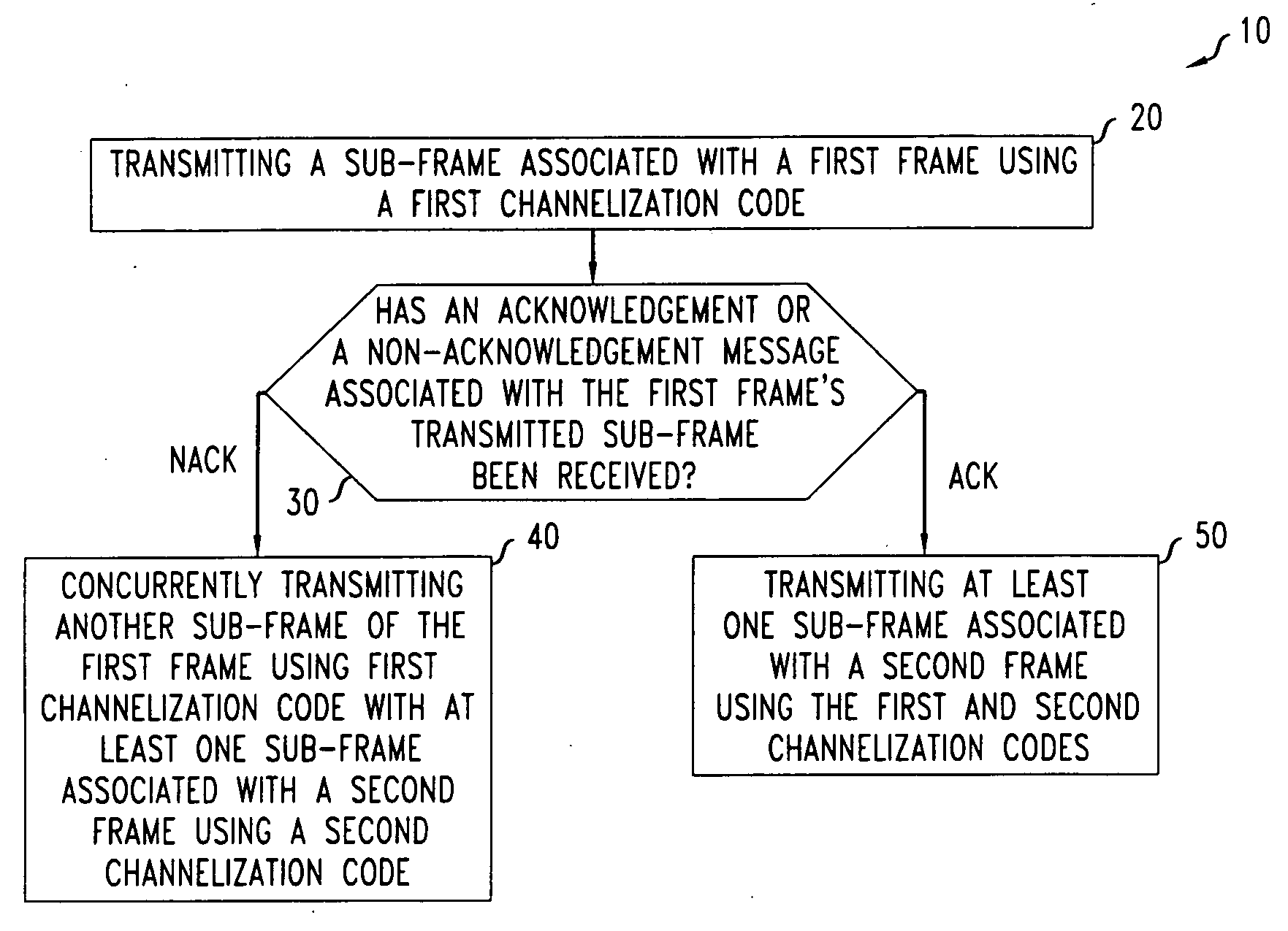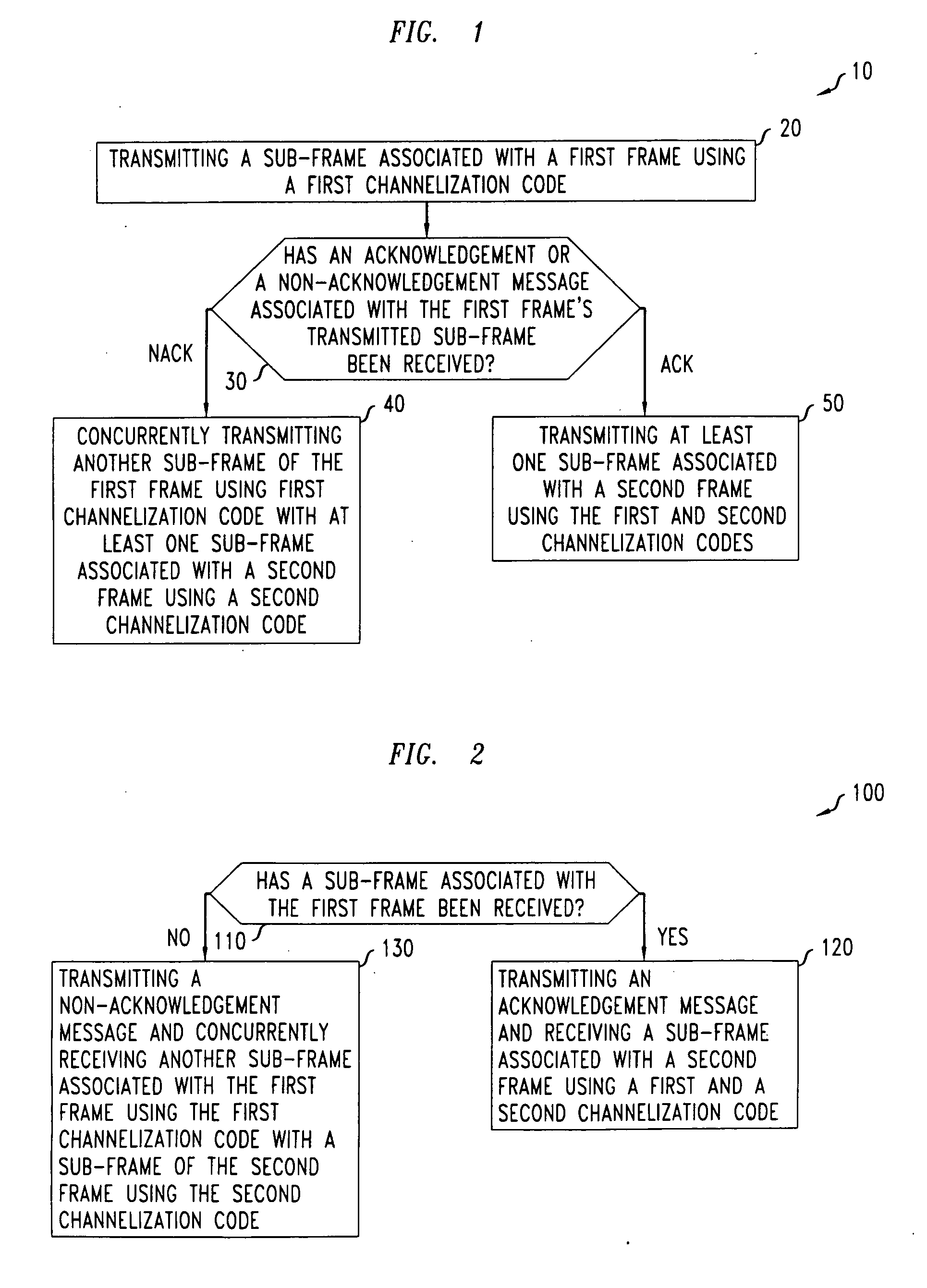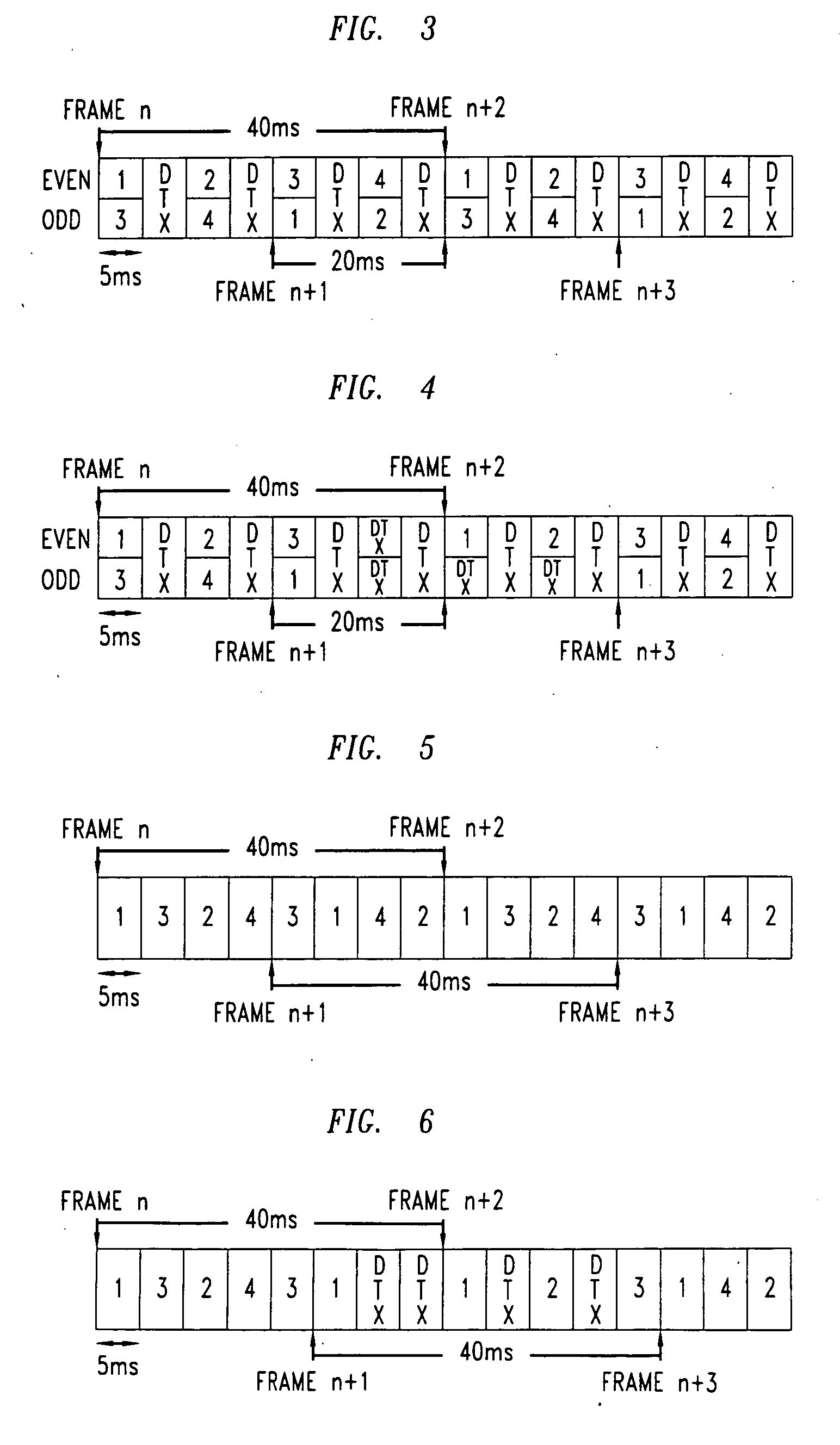Method of interlacing frames
- Summary
- Abstract
- Description
- Claims
- Application Information
AI Technical Summary
Benefits of technology
Problems solved by technology
Method used
Image
Examples
Embodiment Construction
[0025] The present invention provides a method of increasing system capacity for real-time and / or circuit switched services, while reducing the unwanted errors introduced by means of power control, without unduly influencing the quality each wireless user may experience. More particularly, the present invention provides a method of interlacing frames using a retransmission scheme. Various retransmission methods may be employed in conjunction with the present invention, including a number of HARQ techniques, such as Chase combining protocol and incremental redundancy protocol, for example. It should be further noted that the method of the present invention might be applicable on both the uplink and the downlink.
[0026] Within the context of the present invention, each frame may comprise a plurality of sub-frames. The present invention interlaces these frames by assigning at least a first and a second wireless resource, such as a channelization code, channelization tone and / or allocat...
PUM
 Login to View More
Login to View More Abstract
Description
Claims
Application Information
 Login to View More
Login to View More - Generate Ideas
- Intellectual Property
- Life Sciences
- Materials
- Tech Scout
- Unparalleled Data Quality
- Higher Quality Content
- 60% Fewer Hallucinations
Browse by: Latest US Patents, China's latest patents, Technical Efficacy Thesaurus, Application Domain, Technology Topic, Popular Technical Reports.
© 2025 PatSnap. All rights reserved.Legal|Privacy policy|Modern Slavery Act Transparency Statement|Sitemap|About US| Contact US: help@patsnap.com



